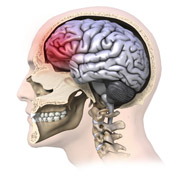Research and Innovation, UNL Office of

Center for Brain, Biology, and Behavior: Faculty Publications
Document Type
Article
Date of this Version
8-1-2023
Citation
Brain Research Bulletin 201 (2023) 110723. https://doi.org/10.1016/j.brainresbull.2023.110723
Abstract
Introduction: Depressive symptoms can emerge as early as childhood and may lead to adverse situations in adulthood. Studies have examined structural brain alternations in individuals with depressive symptoms, but findings remain inconclusive. Furthermore, previous studies have focused on adults or used a categorical approach to assess depression. The current study looks to identify grey matter volumes (GMV) that predict depressive symptomatology across a clinically concerning sample of adolescents.
Methods: Structural MRI data were collected from 338 clinically concerning adolescents (mean age = 15.30 SD=2.07; mean IQ = 101.01 SD=12.43; 132 F). Depression symptoms were indexed via the Mood and Feelings Questionnaire (MFQ). Freesurfer was used to parcellate the brain into 68 cortical regions and 14 subcortical regions. GMV was extracted from all 82 brain areas. Multiple linear regression was used to look at the relationship between MFQ scores and region-specific GMV parameter. Follow up regressions were conducted to look at potential effects of psychiatric diagnoses and medication intake.
Results: Our regression analysis produced a significant model (R2 = 0.446, F(86, 251) = 2.348, p < 0.001). Specifically, there was a negative association between GMV of the left parahippocampal (B = -0.203, p = 0.005), right rostral anterior cingulate (B = -0.162, p = 0.049), and right frontal pole (B = -0.147, p = 0.039) and a positive association between GMV of the left bank of the superior temporal sulcus (B = 0.173, p = 0.029). Follow up analyses produced results proximal to the main analysis.
Conclusions: Altered regional brain volumes may serve as biomarkers for the development of depressive symptoms during adolescence. These findings suggest a homogeneity of altered cortical structures in adolescents with depressive symptoms.
Included in
Behavior and Behavior Mechanisms Commons, Nervous System Commons, Other Analytical, Diagnostic and Therapeutic Techniques and Equipment Commons, Other Neuroscience and Neurobiology Commons, Other Psychiatry and Psychology Commons, Rehabilitation and Therapy Commons, Sports Sciences Commons


Comments
Open access.